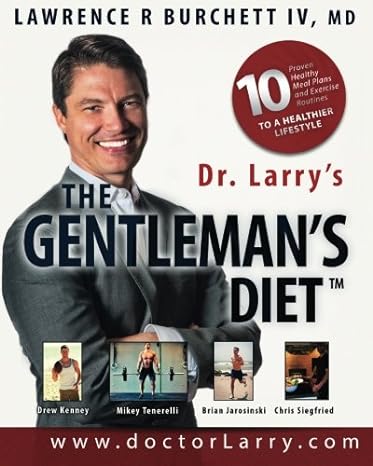How to Balance Exercise and Rest

[cs_content][cs_section bg_color=”hsl(0, 0%, 100%)” parallax=”false” separator_top_type=”none” separator_top_height=”50px” separator_top_angle_point=”50″ separator_bottom_type=”none” separator_bottom_height=”50px” separator_bottom_angle_point=”50″ style=”margin: 0px;padding: 45px 0px;”][cs_row inner_container=”true” marginless_columns=”false” style=”margin: 0px auto;padding: 0px;”][cs_column fade=”false” fade_animation=”in” fade_animation_offset=”45px” fade_duration=”750″ type=”2/3″ style=”padding: 0px;”][x_custom_headline level=”h1″ looks_like=”h1″ accent=”false”]How to Balance Exercise and Rest[/x_custom_headline][cs_text]Reviewed & Approved by Dr. Larry
[dropcap]H[/dropcap]ow often should you be working out, and how often should you be resting your muscles?
Steve Lombardi, a personal trainer and ICU nurse who’s been bodybuilding for 50 years, prefers an intense, high-quality workout for a shorter amount of time rather than spending several hours a day in the gym.
He works out for 1–1.5 hours at a time, resting every third day. In total, he works out five days a week, amounting to 5–7 hours of lifting. This seems fairly reasonable compared to Steve’s extreme low-fat, low-carb, high-protein bodybuilder diet. That’s because according to Steve, too many hours in the gym can result in the muscle damage outweighing the benefits for most people.[/cs_text][x_video_player type=”16:9″ src=”https://youtu.be/xF8kE6kt5-8″ hide_controls=”false” autoplay=”false” no_container=”false” preload=”none” advanced_controls=”false” muted=”false” loop=”false” poster=””][cs_text]
Aim for Quality over Quantity
The key seems to lie in the quality of the hours that you spend in the gym.
While “there’s no hard or fast rule,” Steve says that you need to put in as much effort as you can without tipping the benefit-vs-damage scales towards the latter. For example, today you might have been able to put in a few more reps. But tomorrow, you might not be able to repeat that performance for any number of reasons, including not getting enough rest, carbs or protein, or other small factors. You should just focus on putting out a high-intensity workout for that full hour rather than honing in on exact numbers.
There’s always personal ebb and flow associated with working out and rest periods, as well as with your body’s overall progress. You may plateau at (or even fall back from) a certain number of reps for one week of workouts, and then the next week you may feel ready to add more weight. Just stay consistent, keep showing up to the gym five days a week and work as hard as you can for that hour — regardless of any worries you have about the number of reps or number on the scale.
It’s important to remember that everyone’s body is different, and everyone is at a different stage in their fitness journey. But Steve believes that as long as you’re pushing yourself for an hour a day in the gym and sticking to a healthy diet, you’ll see serious results.
Stay In Tune With Your Body to Understand When to Work and When to Rest
Rest is an important part of building muscle and losing weight, as any athlete or bodybuilder knows. If you aren’t resting for the correct amount of time, you can seriously damage your muscles. The amount of rest that each person needs can vary based on your own body, so if you don’t feel like you’re making any progress or you feel sore and tired all the time, maybe you’re not resting enough.
Steve’s workout routine of two days on and one day off is typical of most very active people, but you may need to work yourself up to that point with one day on and one day off to avoid overtraining and incurring injury.
It can be tempting to work out as often and for as long as possible when you first start a workout or training regimen, but that’s when you’re most vulnerable to injury and overtraining. So although Steve maintains that you should work out as hard as you can for that hour in the gym, you’ll likely need to focus on how hard you can push yourself personally rather than setting your sights on some specific number of reps.
Some signs that you’re overtraining include:
- Constant muscle fatigue and soreness even with proper stretching
- Insomnia
- Depression
- Mood swings
- New health problems
- Increase in common illnesses (colds, flu, etc.)
- Frequent injuries; muscle strains, burst vessels, shin splints, stress fractures, hyperextended limbs, sprains, etc.
Those could be signs that you need to pull back and rest more frequently. It could be your sign to allow yourself to progress a little more gradually.
It’s easier to tell when it’s time to step up to heavier weights or add more reps than it is to tell when you need to ease off, so listen to what your body needs, and pay attention to any shifts in how you respond to your workout schedule.
Find the right balance between work and rest based on the signals that your body provides you; stay in tune with your own body’s needs and limits as you change and progress to avoid imbalance in your own work/rest needs.[/cs_text][x_gap size=”50px”][/cs_column][cs_column fade=”false” fade_animation=”in” fade_animation_offset=”45px” fade_duration=”750″ type=”1/3″ style=”padding: 0px;”][x_widget_area sidebar=”sidebar-main” ][x_widget_area sidebar=”ups-sidebar-adoption-services” class=”man”][/cs_column][/cs_row][cs_row inner_container=”true” marginless_columns=”false” style=”margin: 0px auto;padding: 0px 0px 30px;border-style: solid;border-width: 1px;”][cs_column fade=”false” fade_animation=”in” fade_animation_offset=”45px” fade_duration=”750″ type=”1/1″ style=”padding: 0px;”][cs_text]
Featured Content
[/cs_text][/cs_column][/cs_row][/cs_section][cs_section parallax=”false” separator_top_type=”none” separator_top_height=”50px” separator_top_angle_point=”50″ separator_bottom_type=”none” separator_bottom_height=”50px” separator_bottom_angle_point=”50″ style=”margin: 0px;padding: 20px 0px 0px;”][cs_row inner_container=”true” marginless_columns=”false” style=”margin: 0px auto;padding: 0px;”][cs_column fade=”false” fade_animation=”in” fade_animation_offset=”45px” fade_duration=”750″ type=”1/1″ style=”padding: 0px;”][ess_grid alias=”featured_content”][/cs_column][/cs_row][/cs_section][/cs_content]


